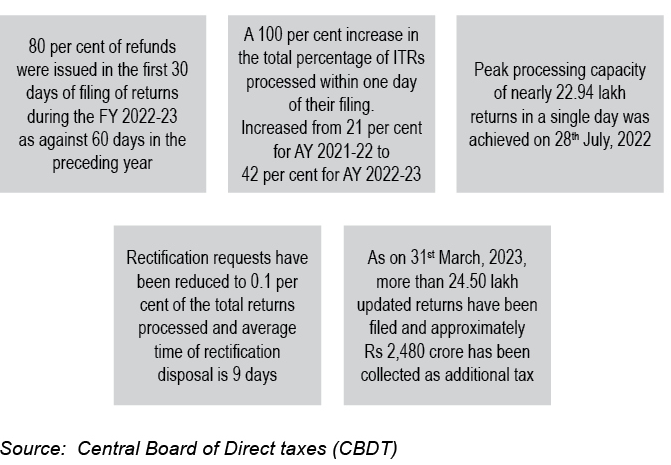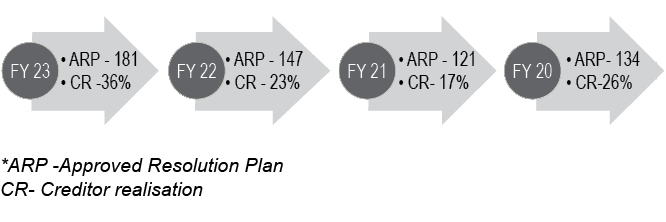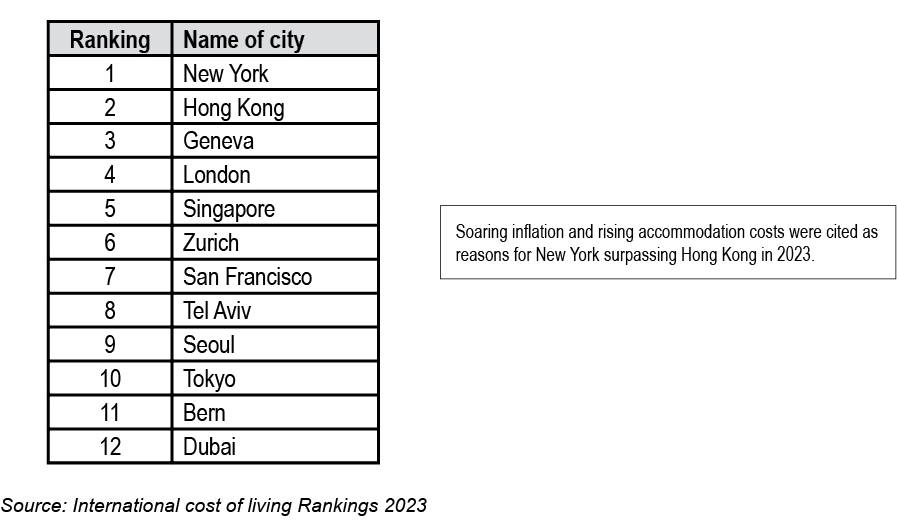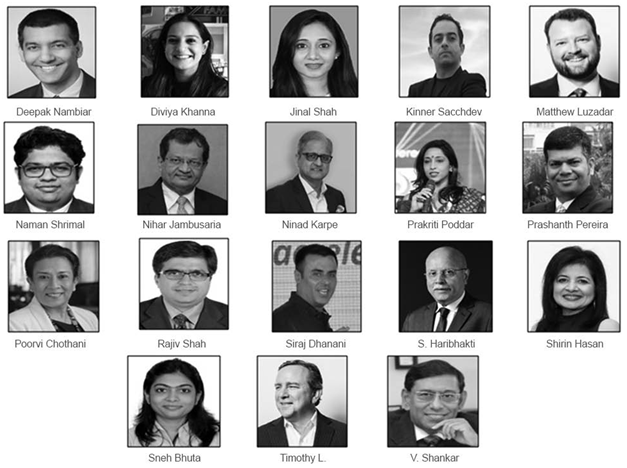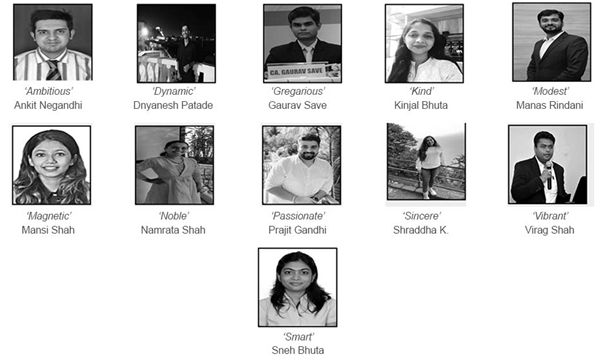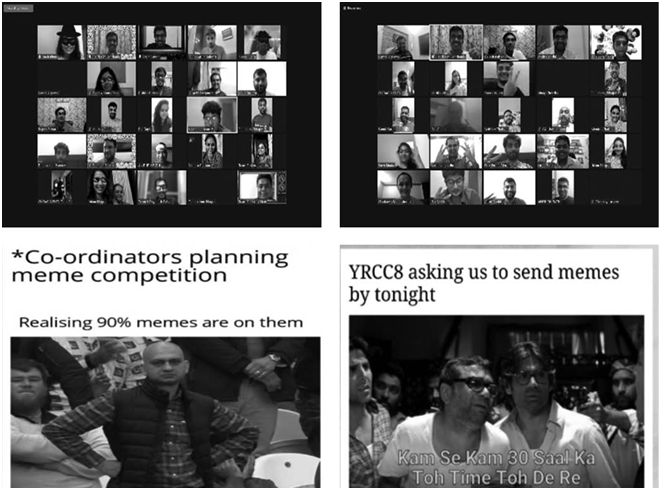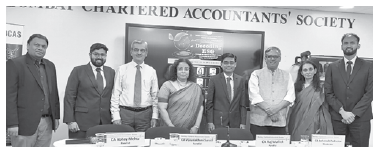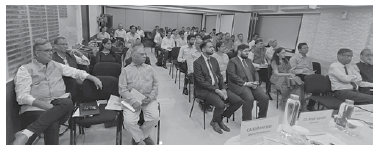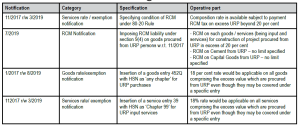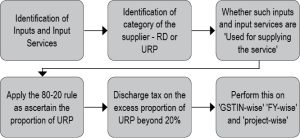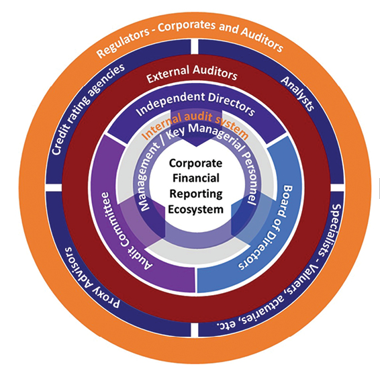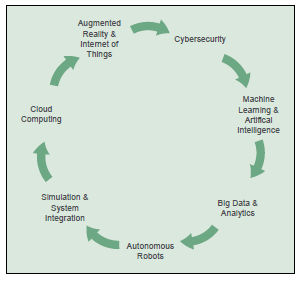DISCLOSURES
RELATED TO IMPLEMENTATION OF Ind AS 116 – ‘LEASES’ FOR THE YEAR ENDED 31ST MARCH, 2020
Compiler’s Note
The Ministry of
Company Affairs on 30th March, 2019 notified Ind AS 116 – Leases. Under Ind AS 116 lessees have to recognise a lease
liability reflecting future lease payments and a ‘right-of-use asset’ for
almost all lease contracts. This is a significant change compared to Ind AS 17,
under which lessees were required to make a distinction between a finance lease
(on balance sheet) and an operating lease (off balance sheet). Ind AS 116 also
gives lessees optional exemptions for certain short-term leases and leases of
low-value assets.
Given below are
disclosures by a few companies for the above.
TCS LTD. (consolidated)
From
Notes forming part of Financial Statements
LEASES
A contract is, or contains, a lease if the
contract conveys the right to control the use of an identified asset for a
period of time in exchange for consideration.
Group as a lessee
The Group accounts for each lease component
within the contract as a lease separately from non-lease components of the
contract and allocates the consideration in the contract to each lease
component on the basis of the relative stand-alone price of the lease component
and the aggregate stand-alone price of the non-lease components. The Group
recognises right-of-use asset representing its right to use the underlying
asset for the lease term at the lease commencement date. The cost of the
right-of-use asset measured at inception shall comprise of the amount of the
initial measurement of the lease liability adjusted for any lease payments made
at or before the commencement date less any lease incentives received, plus any
initial direct costs incurred and an estimate of costs to be incurred by the
lessee in dismantling and removing the underlying asset or restoring the
underlying asset or site on which it is located. The right-of-use asset is
subsequently measured at cost less any accumulated depreciation, accumulated
impairment losses, if any, and adjusted for any re-measurement of the lease
liability. The right-of-use asset is depreciated using the straight-line method
from the commencement date over the shorter of lease term or useful life of
right-of-use asset. The estimated useful lives of right-of-use assets are
determined on the same basis as those of property, plant and equipment.
Right-of-use assets are tested for impairment whenever there is any indication
that their carrying amounts may not be recoverable. Impairment loss, if any, is
recognised in the statement of profit and loss.
The Group measures the lease liability at
the present value of the lease payments that are not paid at the commencement
date of the lease. The lease payments are discounted using the interest rate
implicit in the lease, if that rate can be readily determined. If that rate
cannot be readily determined, the Group uses incremental borrowing rate. For
leases with reasonably similar characteristics, the Group, on a lease-by-lease
basis, may adopt either the incremental borrowing rate specific to the lease or
the incremental borrowing rate for the portfolio as a whole. The lease payments
shall include fixed payments, variable lease payments, residual value
guarantees, exercise price of a purchase option where the Group is reasonably
certain to exercise that option and payments of penalties for terminating the
lease, if the lease term reflects the lessee exercising an option to terminate
the lease. The lease liability is subsequently re-measured by increasing the
carrying amount to reflect interest on the lease liability, reducing the
carrying amount to reflect the lease payments made and re-measuring the
carrying amount to reflect any reassessment or lease modifications or to
reflect revised in-substance fixed lease payments.
The Group recognises the amount of the re-measurement
of lease liability due to modification as an adjustment to the right-of-use
asset and statement of profit and loss depending upon the nature of
modification. Where the carrying amount of the right-of-use asset is reduced to
zero and there is a further reduction in the measurement of the lease
liability, the Group recognises any remaining amount of the re-measurement in
statement of profit and loss. The Group has elected not to apply the
requirements of Ind AS 116 – Leases to short-term leases of all assets
that have a lease term of 12 months or less and leases for which the underlying
asset is of low value. The lease payments associated with these leases are
recognised as an expense on a straight-line basis over the lease term.
GROUP AS A LESSOR
At the inception of the lease the Group
classifies each of its leases as either an operating lease or a finance lease.
The Group recognises lease payments received under operating leases as income
on a straight-line basis over the lease term. In case of a finance lease,
finance income is recognised over the lease term based on a pattern reflecting
a constant periodic rate of return on the lessor’s net investment in the lease.
When the Group is an intermediate lessor, it accounts for its interests in the head
lease and the sub-lease separately. It assesses the lease classification of a
sub-lease with reference to the right-of-use asset arising from the head lease,
not with reference to the underlying asset. If a head lease is a short-term
lease to which the Group applies the exemption described above, then it
classifies the sub-lease as an operating lease. If an arrangement contains
lease and non-lease components, the Group applies Ind AS 115 – Revenue
from contracts with customers to allocate the consideration in the contract.
TRANSITION TO IND AS 116
The Ministry of Corporate Affairs (‘MCA’)
through the Companies (Indian Accounting Standards) Amendment Rules, 2019 and
the Companies (Indian Accounting Standards) Second Amendment Rules, has
notified Ind AS 116 – Leases which replaces the existing lease standard,
Ind AS 17 – Leases and other interpretations. Ind AS 116 sets out the
principles for the recognition, measurement, presentation and disclosure of
leases for both lessees and lessors. It introduces a single, on-balance sheet
lease accounting model for lessees. The Group has adopted Ind AS 116, effective
annual reporting period beginning 1st April, 2019 and applied the
standard to its leases retrospectively, with the cumulative effect of initially
applying the standard, recognised on the date of initial application (1st
April, 2019). Accordingly, the Group has not restated comparative information;
instead, the cumulative effect of initially applying this standard has been
recognised as an adjustment to the opening balance of retained earnings as on 1st
April, 2019. Refer Note 2(h) – Significant accounting policies – Leases in the
Annual report of the Group for the year ended 31st March, 2019, for
the policy as per Ind AS 17.
GROUP AS A LESSEE
Operating leases
For transition, the Group has elected not to
apply the requirements of Ind AS 116 to leases which are expiring within 12
months from the date of transition by class of asset and leases for which the
underlying asset is of low value on a lease-by-lease basis. The Group has also
used the practical expedient provided by the standard when applying Ind AS 116
to leases previously classified as operating leases under Ind AS 17 and
therefore, has not reassessed whether a contract, is or contains a lease, at
the date of initial application, relied on its assessment of whether leases are
onerous, applying Ind AS 37 immediately before the date of initial application
as an alternative to performing an impairment review, excluded initial direct
costs from measuring the right-of-use asset at the date of initial application
and used hindsight when determining the lease term if the contract contains
options to extend or terminate the lease. The Group has used a single discount
rate to a portfolio of leases with similar characteristics.
On transition,
the Group recognised a lease liability measured at the present value of the
remaining lease payments. The right-of-use asset is recognised at its carrying
amount as if the standard had been applied since the commencement of the lease,
but discounted using the lessee’s incremental borrowing rate as at 1st April,
2019. Accordingly, a right-of-use asset of Rs. 6,360 crores and lease liability
of Rs. 6,831 crores has been recognised. The cumulative effect on transition in
retained earnings net of taxes is Rs. 359 crores (including the deferred tax of
Rs. 170 crores). The principal portion of the lease payments has been disclosed
under cash flow from financing activities. The lease payments for operating
leases as per Ind AS 17 – Leases were earlier reported under cash flow
from operating activities. The weighted average incremental borrowing rate of
6.78% has been applied to lease liabilities recognised in the balance sheet at
the date of initial application. On application of Ind AS 116, the nature of
expenses has changed from lease rent in previous periods to depreciation cost
for the right-of-use asset, and finance cost for interest accrued on lease
liability. The difference between the future minimum lease rental commitments
towards non-cancellable operating leases and finance leases reported as at 31st
March, 2019 compared to the lease liability as accounted as at 1st
April, 2019 is primarily due to inclusion of present value of the lease
payments for the cancellable term of the leases, reduction due to discounting
of the lease liabilities as per the requirement of Ind AS 116 and exclusion of
the commitments for the leases to which the Group has chosen to apply the
practical expedient as per the standard.
Finance lease
The Group has leases that were classified as
finance leases applying Ind AS 17. For such leases, the carrying amount of the
right-of-use asset and the lease liability at the date of initial application
of Ind AS 116 is the carrying amount of the lease asset and lease liability on
the transition date as measured applying Ind AS 17. Accordingly, an amount of
Rs. 31 crores has been reclassified from property, plant and equipment to
right-of-use assets. An amount of Rs. 18 crores has been reclassified from
other current financial liabilities to lease liability – current and an amount
of Rs. 44 crores has been reclassified from borrowings – non-current to lease
liability – non-current.
Group as a lessor
The Group is not required to make any
adjustments on transition to Ind AS 116 for leases in which it acts as a
lessor, except for a sub-lease. The Group accounted for its leases in
accordance with Ind AS 116 from the date of initial application. The Group does
not have any significant impact on account of sub-lease on the application of
this standard.
Details of the right-to-use assets held by
the Group are as follows:
(Rs. crores)
|
Particulars |
Additions for the year |
Net carrying amount as |
|
Leasehold Land |
474 |
690 |
|
Buildings |
2,443 |
7,218 |
|
Leasehold Improvements |
15 |
46 |
|
Computer Equipment |
7 |
13 |
|
Vehicles |
5 |
16 |
|
Office Equipment |
7 |
11 |
|
|
2,951 |
7,994 |
Depreciation on right-of-use assets is as
follows:
|
(Rs. crores) |
|
|
Particulars |
Year ended 31st March, |
|
Leasehold Land |
4 |
|
Buildings |
1,225 |
|
Leasehold Improvements |
10 |
|
Computer Equipment |
17 |
|
Vehicles |
10 |
|
Office Equipment |
2 |
|
|
1,268 |
The Group incurred Rs. 392 crores for the
year ended 31st March, 2020 towards expenses relating to short-term
leases and leases of low-value assets. The total cash outflow for leases is Rs.
2,465 crores for the year ended 31st March, 2020, including cash
outflow of short-term leases and leases of low-value assets. The Group has
lease term extension options that are not reflected in the measurement of lease
liabilities. The present value of future cash outflows for such extension
periods as at
31st March, 2020 is Rs. 457 crores.
Lease contracts entered by the Group majorly
pertain to buildings taken on lease to conduct its business in the ordinary
course. The Group does not have any lease restrictions and commitment towards
variable rent as per the contract.
IMPACT OF COVID-19
The Group does not foresee any large-scale
contraction in demand which could result in significant down-sizing of its
employee base rendering the physical infrastructure redundant. The leases that
the Group has entered with lessors towards properties used as delivery centres
/ sales offices are long term in nature and no changes in terms of those leases
are expected due to Covid-19.
From
Auditors’ Report (consolidated)
Key Audit
Matters
|
Key |
How |
|
Adoption of Ind AS 116 – Leases As described in Note 9 to the consolidated financial |
Our audit procedures on adoption of Ind AS 116 include:
u |
|
the Group has a large number of leases with different
Ind AS 116 introduces a new lease accounting model, wherein
Additionally, the standard mandates detailed disclosures in
Refer Note 5(h) and Note 9 to the consolidated financial
|
u Assessed the Group’s evaluation on the
u Involved our specialists to evaluate
u Upon transition as at 1st
• Evaluated the method of transition and related adjustments;
• Tested completeness of the lease data by reconciling the
u On a statistical sample, we performed
u
u evaluated computation of lease
u Assessed and tested the presentation |
HINDUSTAN UNILEVER LTD. (standalone)
From
Notes forming part of Financial Statements
LEASES
The Company has adopted Ind AS 116 – Leases
effective 1st April, 2019 using the modified retrospective method.
The Company has applied the standard to its leases with the cumulative impact
recognised on the date of initial application (1st April, 2019).
Accordingly, previous period information has not been restated.
The Company’s lease asset classes primarily
consist of leases for Land and Buildings and Plant & Machinery. The Company
assesses whether a contract is or contains a lease at inception of a contract.
A contract is, or contains, a lease if the contract conveys the right to
control the use of an identified asset for a period of time in exchange for
consideration. To assess whether a contract conveys the right to control the
use of an identified asset, the Company assesses whether:
(i) the contract involves the use of an identified
asset,
(ii) the Company has substantially all of the
economic benefits from use of the asset through the period of the lease, and
(iii) the Company has the right to direct the use of
the asset.
At the date of commencement of the lease,
the Company recognises a right-of-use asset (‘ROU’) and a corresponding lease
liability for all lease arrangements in which it is a lessee, except for leases
with a term of twelve months or less (short-term leases) and leases of
low-value assets. For these short-term and leases of low-value assets, the
Company recognises the lease payments as an operating expense on a
straight-line basis over the term of the lease.
The right-of-use assets are initially
recognised at cost, which comprises the initial amount of the lease liability
adjusted for any lease payments made at or prior to the commencement date of
the lease plus any initial direct costs less any lease incentives. They are
subsequently measured at cost less accumulated depreciation and impairment
losses, if any. Right-of-use assets are depreciated from the commencement date
on a straight-line basis over the shorter of the lease term and useful life of
the underlying asset.
The lease liability is initially measured at
the present value of the future lease payments. The lease payments are
discounted using the interest rate implicit in the lease or, if not readily
determinable, using the incremental borrowing rates. The lease liability is
subsequently re-measured by increasing the carrying amount to reflect interest
on the lease liability, reducing the carrying amount to reflect the lease
payments made.
A lease liability is re-measured upon the
occurrence of certain events such as a change in the lease term or a change in
an index or rate used to determine lease payments. The re-measurement normally
also adjusts the leased assets.
Lease liability and ROU asset have been
separately presented in the balance sheet and lease payments have been
classified as financing cash flows.
Following are the lease assets of the
Company:
(Rs. crores)
|
Particulars |
Leasehold Land |
Land & Building |
Plant & Equipment |
Total |
|
Movements during the year |
|
|
|
|
|
Balance as at 31st March, 2019 |
27 |
– |
– |
27 |
|
Addition on account of transition to Ind AS 116 – |
– |
146 |
527 |
673 |
|
Additions |
– |
268 |
212 |
480 |
|
Disposals |
(2) |
(98) |
(34) |
(134) |
|
Balance as at 31st March, 2020 |
25 |
316 |
705 |
1,046 |
|
Accumulated Depreciation |
|
|
|
|
|
Additions |
0 |
159 |
196 |
355 |
|
Disposals |
– |
(82) |
(27) |
(109) |
|
Balance as at 31st March, 2020 |
0 |
77 |
169 |
246 |
|
Net Block as at 31st March, 2020 |
25 |
239 |
536 |
800 |
Notes:
(a) The Company has adopted Ind AS 116
effective 1st April, 2019 using the modified retrospective method.
The Company has applied the standard to its leases with the cumulative impact
recognised on the date of initial application (1st April, 2019).
Accordingly, previous period information has not been restated.
This has resulted in recognising a
right-of-use asset of Rs. 673 crores and a corresponding lease liability of Rs.
725 crores. The difference of Rs. 35 crores (net of deferred tax asset created
of Rs. 17 crores) has been adjusted to retained earnings as at 1st April,
2019.
In the statement of profit and loss for the
current year, operating lease expenses which were recognised as other expenses
in previous periods is now recognised as depreciation expense for the
right-of-use asset and finance cost for interest accrued on lease liability.
The adoption of this standard did not have any significant impact on the profit
for the year and earnings per share. The weighted average incremental borrowing
rate of 8.5% has been applied to lease liabilities recognised in the balance
sheet at the date of initial application.
(b) The Company incurred Rs. 102 crores for
the year ended 31st March, 2020 towards expenses relating to
short-term leases and leases of low-value assets. The total cash outflow for
leases is Rs. 528 crores for the year ended 31st March, 2020,
including cash outflow of short-term leases and leases of low-value assets.
Interest on lease liabilities is Rs. 74 crores for the year.
(c) The Company’s leases mainly comprise of
land and buildings and plant and equipment. The Company leases land and
buildings for manufacturing and warehouse facilities. The Company also has
leases for equipment.
(d) The title deeds of leasehold land, net
block aggregating Rs. 1 crore (31st March, 2019: Rs. 1 crore) are in
the process of perfection of title.
INFOSYS LTD. (consolidated)
From
Notes forming part of Financial Statements
LEASES
Ind AS 116 requires lessees to determine the
lease term as the non-cancellable period of a lease adjusted with any option to
extend or terminate the lease, if the use of such option is reasonably certain.
The Group makes an assessment on the expected lease term on a lease-by-lease
basis and thereby assesses whether it is reasonably certain that any options to
extend or terminate the contract will be exercised. In evaluating the lease
term, the Company considers factors such as any significant leasehold
improvements undertaken over the lease term, costs relating to the termination
of the lease and the importance of the underlying asset to Infosys’s operations
taking into account the location of the underlying asset and the availability
of suitable alternatives. The lease term in future periods is reassessed to
ensure that it reflects the current economic circumstances. After considering current
and future economic conditions, the Group has concluded that no changes are
required to the lease periods relating to the existing lease contracts (refer
to Note 2.19).
Note 2.19 Leases
ACCOUNTING POLICY
The Group as a lessee
The Group’s lease asset classes primarily
consist of leases for land and buildings. The Group assesses whether a contract
contains a lease at the inception of a contract. A contract is, or contains, a
lease if the contract conveys the right to control the use of an identified asset
for a period of time in exchange for consideration. To assess whether a
contract conveys the right to control the use of an identified asset, the Group
assesses whether:
(i) the contract involves the use of an identified
asset;
(ii) the Group has substantially all of the economic
benefits from use of the asset through the period of the lease, and
(iii) the Group has the right to direct the use of
the asset.
At the date of commencement of the lease,
the Group recognises a right-of-use (ROU) asset and a corresponding lease
liability for all lease arrangements in which it is a lessee, except for leases
with a term of 12 months or less (short-term leases) and low-value leases. For
these short-term and low-value leases, the Group recognises the lease payments
as an operating expense on a straight-line basis over the term of the lease.
Certain lease arrangements include the
option to extend or terminate the lease before the end of the lease term. ROU
assets and lease liabilities include these options when it is reasonably
certain that they will be exercised.
The ROU assets are initially recognised at
cost, which comprises the initial amount of the lease liability adjusted for
any lease payments made at or prior to the commencement date of the lease plus
any initial direct costs less any lease incentives. They are subsequently
measured at cost less accumulated depreciation and impairment losses.
ROU assets are depreciated from the
commencement date on a straight-line basis over the shorter of the lease term
and useful life of the underlying asset. ROU assets are evaluated for
recoverability whenever events or changes in circumstances indicate that their
carrying amounts may not be recoverable. For the purpose of impairment testing,
the recoverable amount (i.e. the higher of the fair value less cost to sell and
the value-in-use) is determined on an individual asset basis unless the asset
does not generate cash flows that are largely independent of those from other
assets. In such cases, the recoverable amount is determined for the CGU to
which the asset belongs.
The lease liability is initially measured at
amortised cost at the present value of the future lease payments. The lease
payments are discounted using the interest rate implicit in the lease or, if
not readily determinable, using the incremental borrowing rates in the country
of domicile of the leases. Lease liabilities are re-measured with a
corresponding adjustment to the related right of use asset if the Group changes
its assessment of whether it will exercise an extension or a termination
option. Lease liability and ROU asset have been separately presented in the
balance sheet and lease payments have been classified as financing cash flows.
The Group as a lessor
Leases for which the Group is a lessor are
classified as a finance or operating lease. Whenever the terms of the lease
transfer substantially all the risks and rewards of ownership to the lessee,
the contract is classified as a finance lease. All other leases are classified
as operating leases.
When the Group is an intermediate lessor, it
accounts for its interests in the head lease and the sub-lease separately. The
sub-lease is classified as a finance or operating lease by reference to the ROU
asset arising from the head lease.
For operating leases, rental income is
recognised on a straight-line basis over the term of the relevant lease.
Transition
Effective 1st April, 2019, the
Group adopted Ind AS 116 – Leases and applied the standard to all lease
contracts existing on 1st April, 2019 using the modified
retrospective method and has taken the cumulative adjustment to retained
earnings, on the date of initial application. Consequently, the Group recorded
the lease liability at the present value of the lease payments discounted at
the incremental borrowing rate and the ROU asset at its carrying amount as if
the standard had been applied since the commencement date of the lease, but
discounted at the lessee’s incremental borrowing rate at the date of initial
application. Comparatives as at and for the year ended 31st March,
2019 have not been retrospectively adjusted and therefore will continue to be
reported under the accounting policies included as part of our Annual Report
for the year ended 31st March, 2019.
On transition, the adoption of the new
standard resulted in recognition of ‘Right of Use’ asset of Rs. 2,907 crores,
‘Net investment in sub-lease’ of ROU asset of Rs. 430 crores and a lease
liability of Rs. 3,598 crores. The cumulative effect of applying the standard,
amounting to Rs. 40 crores was debited to retained earnings, net of taxes. The
effect of this adoption is insignificant on the profit before tax, profit for
the period and earnings per share. Ind AS 116 has resulted in an increase in
cash inflows from operating activities and an increase in cash outflows from
financing activities on account of lease payments.
The following is the summary of practical
expedients elected on initial application:
(1) Applied a single discount rate to a portfolio
of leases of similar assets in similar economic environment with a similar end
date;
(2) Applied the exemption not to recognise ROU
assets and liabilities for leases with less than 12 months of lease term on the
date of initial application;
(3) Excluded the initial direct costs from the
measurement of the right-of-use asset at the date of initial application;
(4) Applied the practical expedient to grandfather
the assessment of which transactions are leases. Accordingly, Ind AS 116 is
applied only to contracts that were previously identified as leases under Ind
AS 17.
The difference
between the lease obligation recorded as of 31st March, 2019 under
Ind AS 17 disclosed under Note 2.19 of the 2019 Annual Report and the value of
the lease liability as of 1st April, 2019 is primarily on account of
inclusion of extension and termination options reasonably certain to be
exercised, in measuring the lease liability in accordance with Ind AS 116 and
discounting the lease liabilities to the present value under Ind AS 116. The
weighted average incremental borrowing rate applied to lease liabilities as at
1st April, 2019 is 4.5%. The changes in the carrying value of right
of use assets for the year ended 31st March, 2020 are as follows:
|
(Rs. crores) |
|||||
|
Particulars |
Category |
Total |
|||
|
Land |
Buildings |
Vehicles |
Companies |
||
|
Balance as of |
– |
2,898 |
9 |
– |
2,907 |
|
Reclassified on account of adoption of Ind AS 116 |
634 |
– |
– |
– |
634 |
|
Additions (1) |
1 |
1,064 |
6 |
49 |
1,120 |
|
Additions through business combination |
– |
177 |
10 |
– |
187 |
|
Deletions |
(3) |
(130) |
(1) |
– |
(134) |
|
Depreciation |
(6) |
(540) |
(9) |
(8) |
(563) |
|
Translation difference |
– |
16 |
– |
1 |
17 |
|
Balance as of 31st March, 2020 |
626 |
3,485 |
15 |
42 |
4,168 |
(1) Net
of lease incentives of Rs. 115 crores related to lease of buildings
The break-up of current and non-current
lease liabilities as on 31st March, 2020 is as follows:
|
(Rs. crores) |
|
|
Particulars |
Amount |
|
Current lease liabilities |
619 |
|
Non-current lease liabilities |
4,014 |
|
Total |
4,633 |
The movement in lease liabilities during the
year ended 31st March, 2020 is as follows:
|
(Rs. crores) |
|
|
Particulars |
Year ended |
|
Balance at the beginning |
3,598 |
|
Additions |
1,241 |
|
Additions through business combination |
224 |
|
Deletions |
(145) |
|
Finance cost accrued during the period |
170 |
|
Payment of lease liabilities |
(639) |
|
Translation difference |
184 |
|
Balance at the end |
4,633 |
The details regarding the contractual
maturities of lease liabilities as of 31st March, 2020 on an
undiscounted basis are as follows:
(Rs. crores)
|
Particulars |
Amount |
|
Less than one year |
796 |
|
One to five years |
2,599 |
|
More than five years |
2,075 |
|
Total |
5,470 |
The Group does not face a significant
liquidity risk with regard to its lease liabilities as the current assets are
sufficient to meet the obligations related to lease liabilities as and when
they fall due.
Rental expense recorded for short-term
leases was Rs. 89 crores for the year ended 31st March, 2020.
The aggregate depreciation on ROU assets has
been included under depreciation and amortisation expense in the Consolidated
Statement of Profit and Loss.
The movement in
the net investment in sub-lease of ROU assets during the year ended 31st
March, 2020 is as follows:
|
(Rs. crores) |
|
|
Particulars |
Year ended |
|
Balance at the beginning |
430 |
|
Interest income accrued during the period |
15 |
|
Lease receipts |
(46) |
|
Translation difference |
34 |
|
Balance at the end |
433 |
The details regarding the contractual
maturities of net investment in sub-lease of ROU asset as on 31st March,
2020 on an undiscounted basis are as follows:
|
(Rs. crores) |
|
|
Particulars |
Amount |
|
Less than one year |
50 |
|
One to five years |
217 |
|
More than five years |
244 |
|
Total |
511 |
Leases not yet commenced to which Group is
committed are Rs. 655 crores for a lease term ranging from two to thirteen
years.










